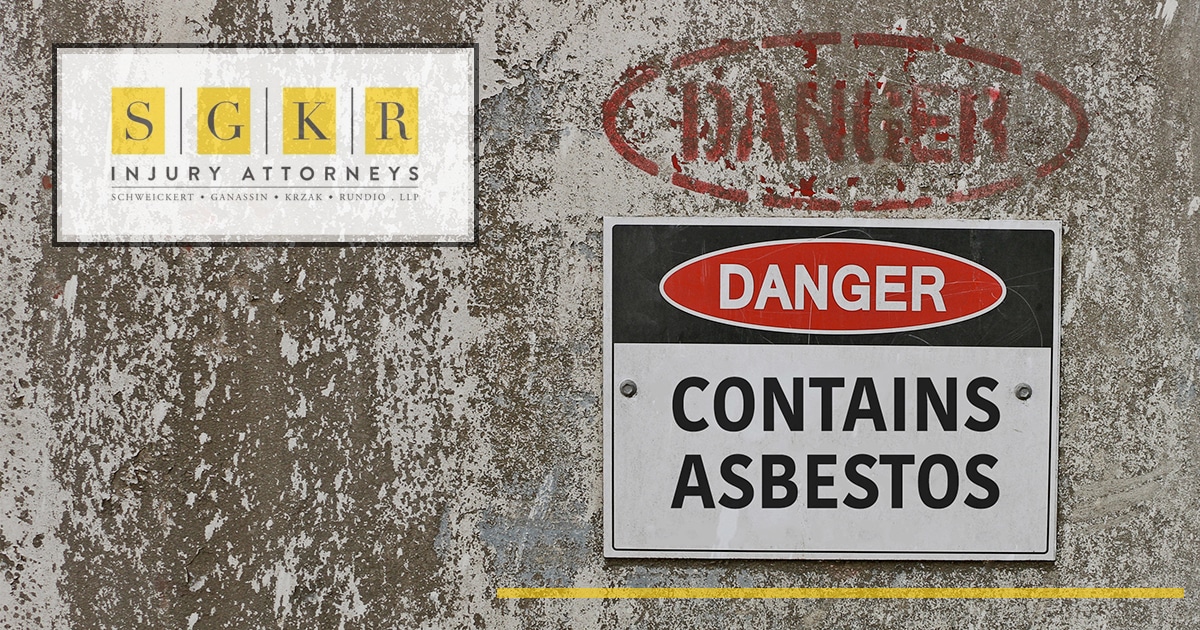Can Secondary Asbestos Exposure Cause Mesothelioma?

Mesothelioma, a rare and aggressive form of cancer, is primarily known to affect individuals with direct exposure to asbestos.
However, emerging research has shed light on the potential risks of secondary asbestos exposure.
Understanding the implications of secondary exposure is crucial for protecting the health and well-being of individuals who may have been indirectly exposed to asbestos fibers.
What Is Secondary Asbestos Exposure?
This concept refers to the inhalation or ingestion of asbestos fibers, a naturally occurring mineral that was widely used in various industries for its heat-resistant and insulating properties.
When asbestos-containing materials are disturbed or deteriorate, microscopic fibers can become airborne and easily inhaled or ingested by individuals nearby. These fibers can then become lodged in the lungs or other organs, leading to serious health risks, including mesothelioma, lung cancer, and asbestosis.
This exposure can occur in Illinois workplaces where asbestos-containing materials are present, as well as in residential settings through insulation, roofing, or other construction materials.
Individuals may also be exposed to this toxic fiber through environmental contamination, non‐occupational exposure from domestic sources, or activities such as renovation or demolition of older buildings. Due to its known health hazards, asbestos use has been heavily regulated or banned in many countries. However, exposure remains a concern in areas where items fabricated using asbestos are still in use or haven’t been properly managed or removed.
Secondary asbestos, sometimes referred to as para-occupational exposure, occurs when individuals come into contact with these fibers through indirect means, such as through contaminated clothing, vehicles, or the environment.
This type of exposure commonly affects family members, friends, or others who have close contact with individuals who work with or around asbestos-containing materials.
According to a study by the Centers for Disease Control (CDC), “878 household contacts of asbestos workers revealed that 4 out of 115 total deaths were from pleural mesothelioma and that the rate of deaths from all types of cancer was doubled.”
Secondary Asbestos Exposure and the Risk of Mesothelioma
While primary contact with this fiber poses the highest risk of mesothelioma, secondary exposure can also lead to the development of this deadly cancer.
Once airborne, these fibers can linger in the environment for extended periods, increasing the likelihood of inhalation or ingestion by those nearby. Over time, these fibers can accumulate in the lungs or other organs, triggering the onset of this aggressive form of cancer.
Factors Contributing to Secondary Exposure
Many factors can contribute to secondary asbestos exposure, including inadequate workplace safety measures, improper handling of materials containing this fiber, and lack of awareness about the risks associated with coming in contact with it.
The most common factors leading to secondary exposure include:
- Occupational exposure: Workers who handle asbestos-laden building materials can inadvertently bring these fibers home on their clothing, shoes, or skin, exposing their family members to them.
- Environmental contamination: Living near mines, processing plants, or industrial sites can increase the risk of secondary contact due to airborne fibers contaminating the surrounding environment.
- Residential exposure: Individuals living in homes built with asbestos-containing materials, such as insulation, roofing, or flooring, may be exposed to fibers if these materials deteriorate or are disturbed during renovation or repair activities.
- Renovation and demolition: Renovating or demolishing older buildings that are constructed using products containing asbestos can release those fibers into the air, potentially exposing nearby residents and workers to secondary exposure.
- Transport and handling: Transportation of materials or equipment used in industries where asbestos is prevalent can also contribute to secondary exposure if proper precautions aren’t taken to prevent contamination of vehicles, clothing, or other surfaces.
- Poor ventilation: Inadequate ventilation in workplaces or indoor environments can exacerbate the spread of airborne asbestos fibers, increasing the risk of secondary exposure for individuals near its sources.
- Asbestos waste disposal: Improper disposal of asbestos-containing materials or waste can lead to environmental contamination and secondary exposure if those toxic fibers are released into the air or water supply by factories or industrial plants.
By addressing these factors and taking appropriate preventive measures, such as proper handling and disposal of products containing asbestos, effective ventilation systems, and heightened awareness of primary and secondary exposure risks, potential diagnoses can be significantly reduced.
Legal Implications and Compensation
Individuals who develop mesothelioma as a result of secondary asbestos exposure may be entitled to pursue legal recourse and seek compensation for their injuries.
While proving liability in secondary exposure cases can be challenging, the experienced mesothelioma attorneys at Schweickert Ganassin Krzak Rundio, LLP can help navigate the legal process and advocate for the rights of affected individuals and their families.
Prevention and Awareness
Preventing secondary asbestos exposure requires heightened awareness of the risks associated with handling these toxic materials and workers and employers alike taking proactive measures to minimize contact.
Illinois employers must implement strict safety protocols to protect workers from exposure, including proper training, use of personal protective equipment, and regular monitoring of asbestos levels in the workplace.
You should take precautions to avoid contact with materials containing this fiber and seek professional assistance for asbestos testing and removal when necessary.
While primary asbestos exposure remains the primary cause of mesothelioma, secondary exposure poses a significant risk to individuals who come into contact with fibers through indirect means.
Understanding the implications of secondary exposure is essential for protecting the health and well-being of those at risk and advocating for safer workplaces and environments.
By raising awareness, implementing preventive measures, and seeking legal help when necessary, we can all work towards reducing the incidence of mesothelioma and ensuring justice for those affected by asbestos-related diseases.
If you have any questions about asbestos exposure that led to your mesothelioma diagnosis and your rights, our experienced attorneys at Schweickert Ganassin Krzak Rundio, LLP are here to help you find answers.










